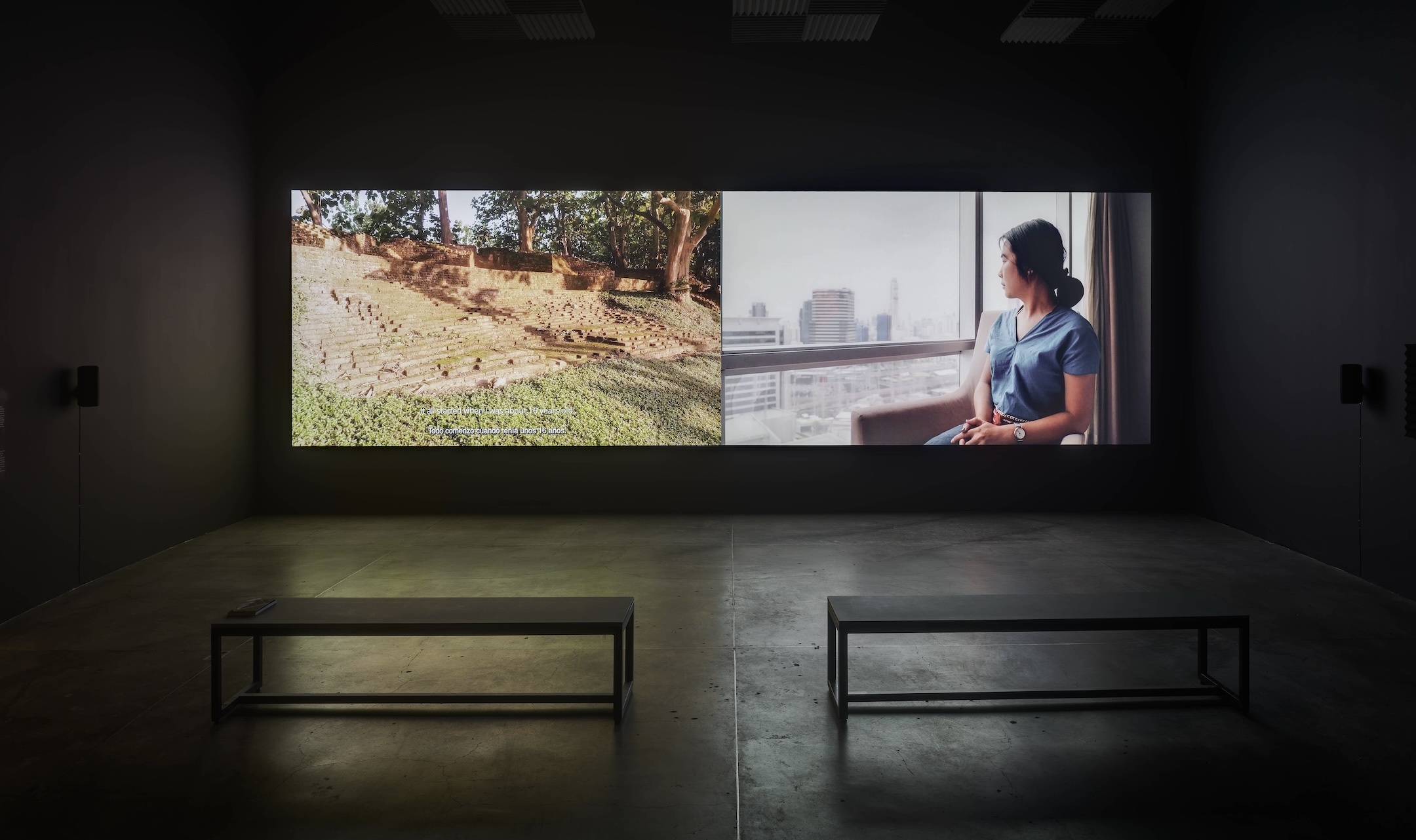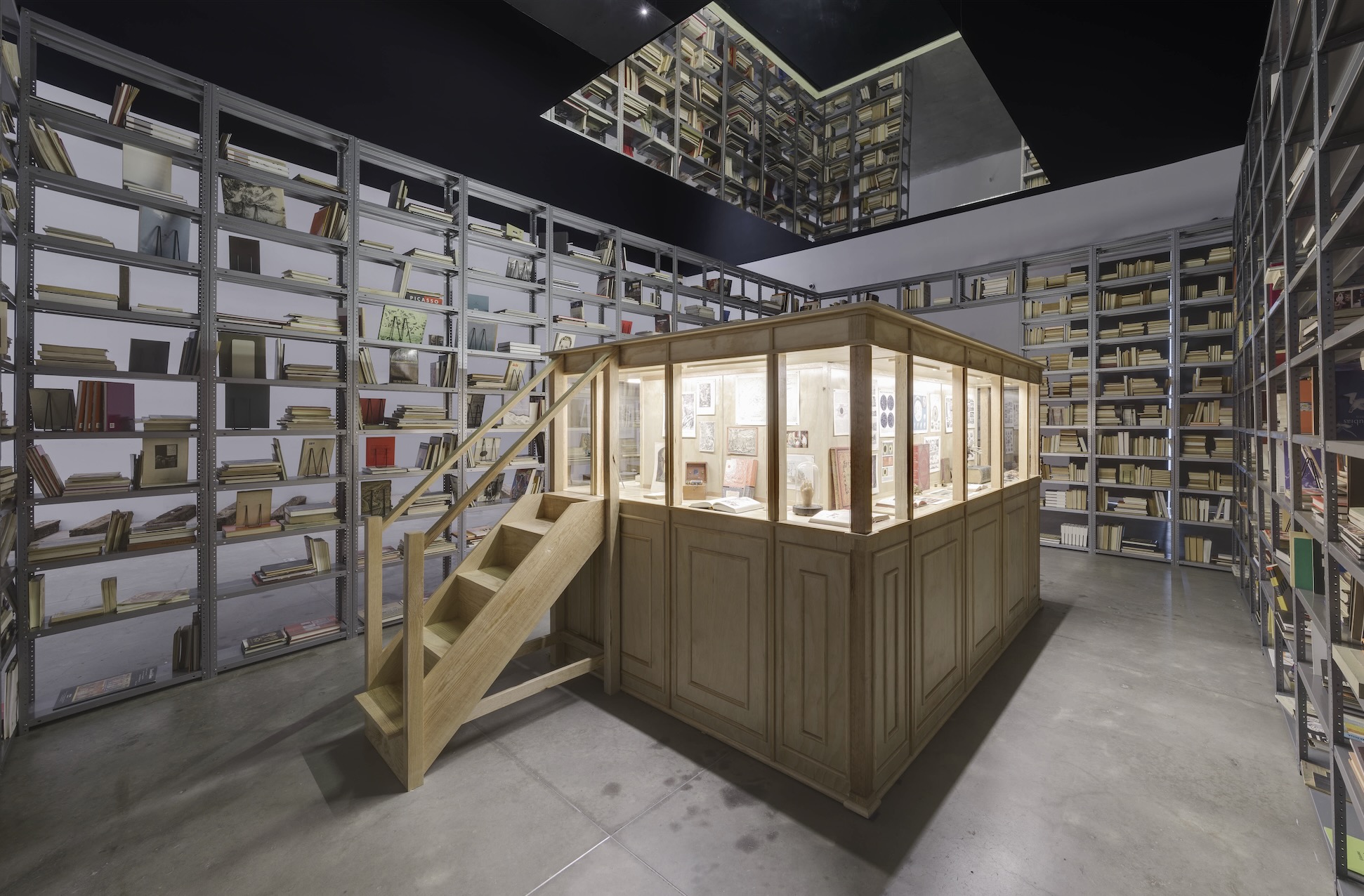
Review
Visible Repairs: Kader Attia at the MUAC
by Constanza Ontiveros Valdés
Reading time
5 min
Is it possible to repair the irreparable? Through objects, reflections, testimonies, and evocative sounds, Kader Attia (1970) explores deep collective wounds born of cultural collisions. Yet he also lingers on those that emerge from personal experience—the lived wounds of his interviewees, and perhaps our own, should we dare to face them. Descenso al Paraíso [A Descent into Paradise], Attia’s exhibition at the MUAC, plunges us into the psyche of the French-Algerian artist and into his philosophical, historical, and existential inquiries through a language that is at once critical, playful, and poetic. Using a wide array of media—from installation and video to photography, painting, and sculpture—Attia’s first solo show in Mexico unfolds a narrative that weaves together appropriation, the layering of traditions, ritual, suppression, and memory. At every turn, it reveals the chains of interpretation and re-signification that form part of the postcolonial world, despite ongoing efforts to erase traces, to conceal and to simulate—gestures that, ironically, end up speaking the loudest.

As visitors move through each gallery—curated by Cuauhtémoc Medina and Alejandra Labiada—they encounter fragments of references and traditions, intertwined by a form of social commentary rooted in lived experience. This commentary draws us in through mirrors that multiply or distort our image, confronting us with ourselves. This is especially evident in works like Continuo de reparación: La Luz de la Escalera de Jacob [Repair Continuum: The Light of Jacob’s Ladder] (2013), composed of towering piles of books on various topics and outdated calendars arranged in immersive library-like shelves, encircling a cabinet of curiosities filled with objects evoking science and modern knowledge. At its center, a staircase inspired by the biblical story in Genesis—where Jacob dreams of a ladder reaching to heaven with angels ascending and descending—leads into an abyss of reflections and neon lights. Within it, both the books and the people navigating this labyrinth of knowledge—a kind of ode to modernity—are endlessly mirrored and inverted, without direction or finality. This unstable reflection mesmerizes us, urging us to question how we approach knowledge, which is always also belief.

Other works, such as the replica African wooden masks in the series Mirrors and Masks (2024), adorned with shards of reflective surfaces, serve as metaphoric, ritualistic, and bodily mirrors. They evoke the appropriation of African traditions by Western avant-gardes—especially Cubism—but also suggest more than that. In gazing upon them, our reflection fractures into scattered flashes of light, inviting alternate gazes that hint at another path—one beyond the elusive, perhaps even illusory, notion of cultural “authenticity.” This ties directly to Attia’s core concept of repair, which he sees not as restoration to an original state, but as the flow, adaptation, and overlapping of traditions and knowledge that arise in moments of crisis and oppression. When made visible, these processes give rise to something new—a possible point of encounter. This notion stems from Attia’s multicultural background—between France, Algeria, and later several African and South American countries—combined with rigorous historical and theoretical research, imbuing his work with an experiential, even intimate, dimension.

More poetic in tone are works like Sin título (Palos de lluvia) [Untitled (Rain Sticks)] (2024), where 21 Amazonian rain sticks rotate via mechanical devices, emitting synchronized sounds. The piece speaks to the fluidity of each step we take, every glance, every gesture. Here, Attia distills the complexity of the human experience—immersed in chaos and conflict, yet also in the subtle reinvention found in the ebb and flow of sound and time, which shape both our individuality and the world around us, including the natural world. This contemplative pause resonates with Pluvialidad #1 [Pluviosity #1] (2023), a video in the adjoining room. Touching on animist and Buddhist traditions in Thailand, it shows raindrops falling on monuments and nature, leaving marks and slowly transforming them—just as each tradition shifts, and we do too.
The final gallery is the most explicitly autobiographical. It features the documentary La maleta olvidada [The Forgotten Suitcase] (2024), which weaves together stories from the Algerian rebellion against French colonial rule with memories from Attia’s mother. These narratives are connected by suitcases filled with images, now given new life as they are revealed. In many ways, this work condenses the memories, objects, cultural overlays, and acts of violence that Attia explores throughout the exhibition—through interwoven stories, some implied, others, like here, recounted in full.
While the exhibition addresses loss, violence, and subjugation, upon leaving the final gallery—shrouded in shadow—a light becomes perceptible, a possibility. Attia seems to suggest that the first step is to show, to reveal, and to search for common ground, which arises in moments of emotional connection with others and with ourselves. He opens a path toward an infinite cycle of repair, where wounds also trace the way forward—toward reconciliation, awareness, and an affirmation of the enigmatic and ever-shifting nature of culture itself. In Attia’s own words, “repair is also about speaking of the irreparable.”
Translated to English by Luis Sokol
Published on May 29 2025